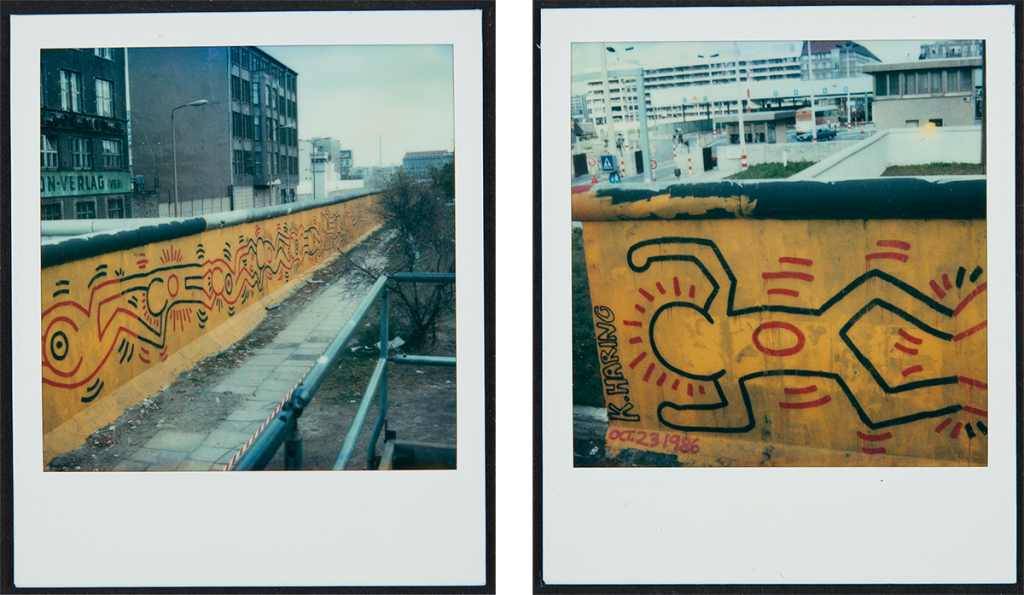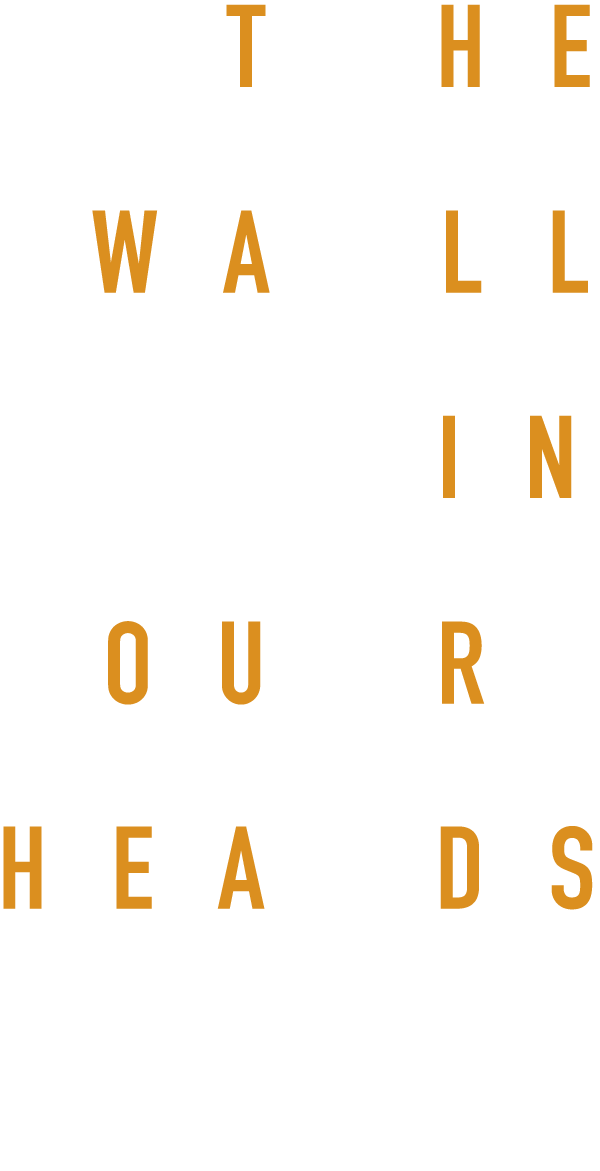Celebrated international artist Keith Haring painted numerous murals around the world, including several at sites of conflict and contestation. In 1986, at the invitation of the Haus am Checkpoint Charlie, Haring painted a 300-foot-long section of the Berlin Wall, featuring interlinked human figures rendered in black, red, and yellow, the colors of the traditional German flag. Haring painted continuously, covering the surface in one day. His monumental artwork presaged the reunion of the two Germanys, even as he coded a variety of subtle physical symbols of difference within the interlocked figures.

Berlin Wall Mural at Checkpoint Charlie
Polaroids, 1986
Keith Haring Foundation
That day, Haring told members of the press, “It’s a humanistic gesture, more than anything else…a political and subversive act—an attempt to psychologically destroy the Wall by painting it.” During the press conference, Haring drew attention to another region and crucible of political conflict. He wore a self-designed “Free South Africa” T-shirt, symbolically linking his mural on the Berlin Wall to his global anti-apartheid advocacy. Within days of its creation, Haring’s mural was painted over by other artists, and audiences lost the opportunity to make connections between the Berlin Wall and contemporary global conflicts. To date no known remnants of Haring’s Berlin Wall mural exist. However, a few years later, in 1989, in the spirit of reunification, Haring created a design for a poster and T-shirt, hybridizing the initials of the previously divided German regimes. “BRDDR” represents the bridging of the Bundesrepublik Deutschland and the Deutsche Demokratische Republik, and refers to the newly opened border with the timely exclamation, “Open 24 Hours!” printed in both English and German.
